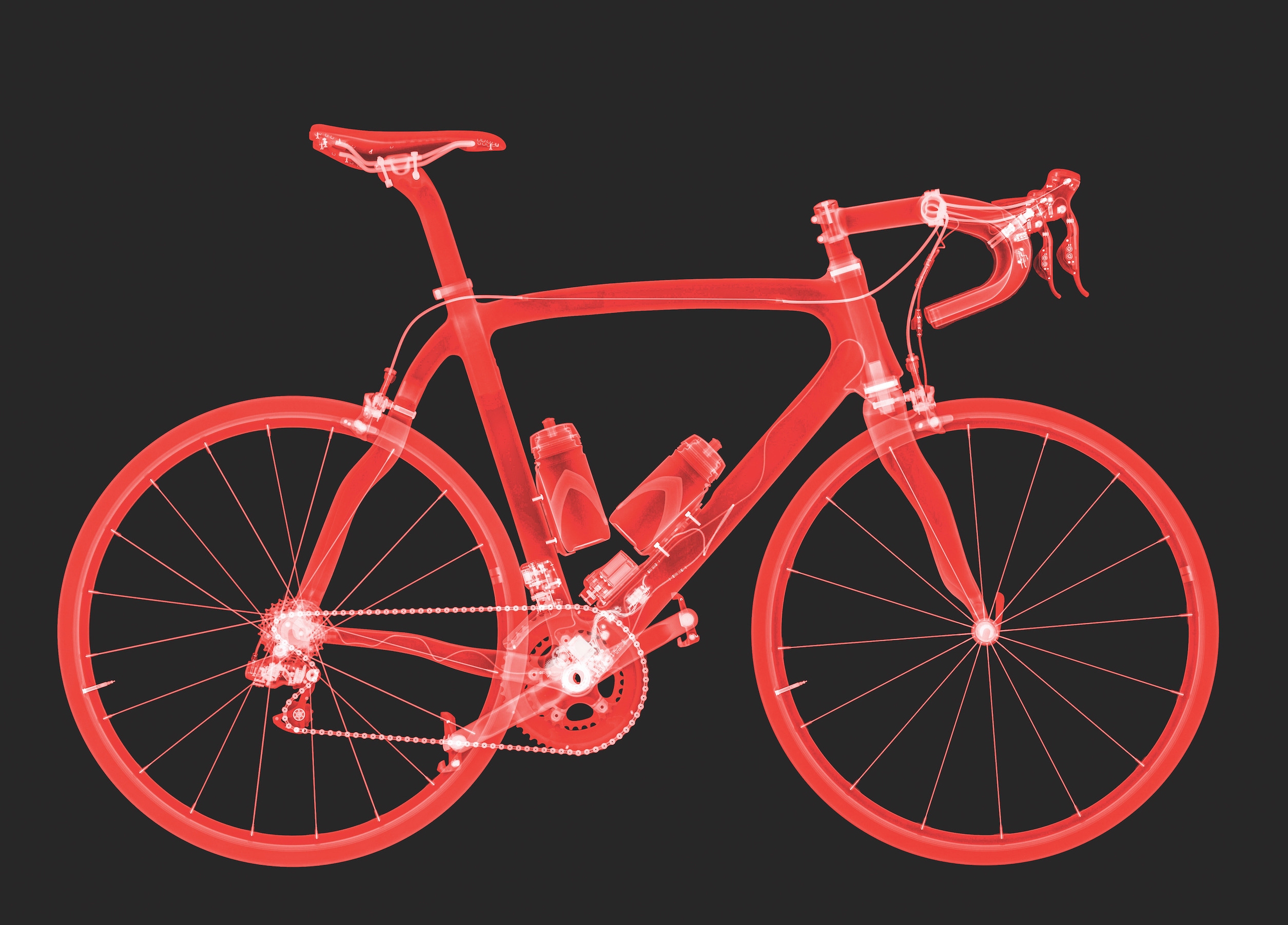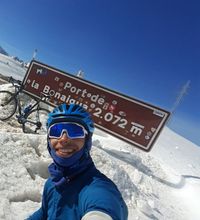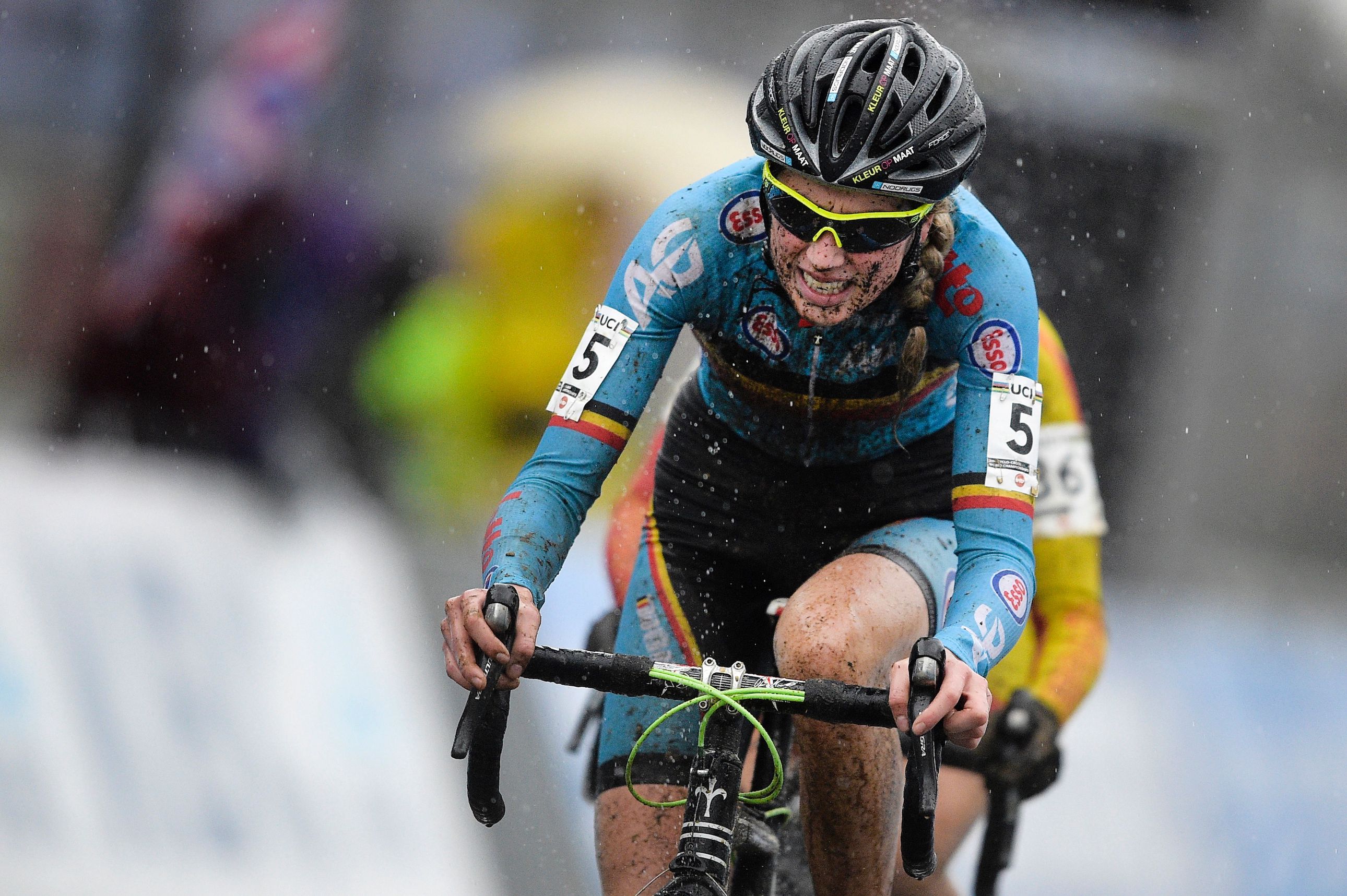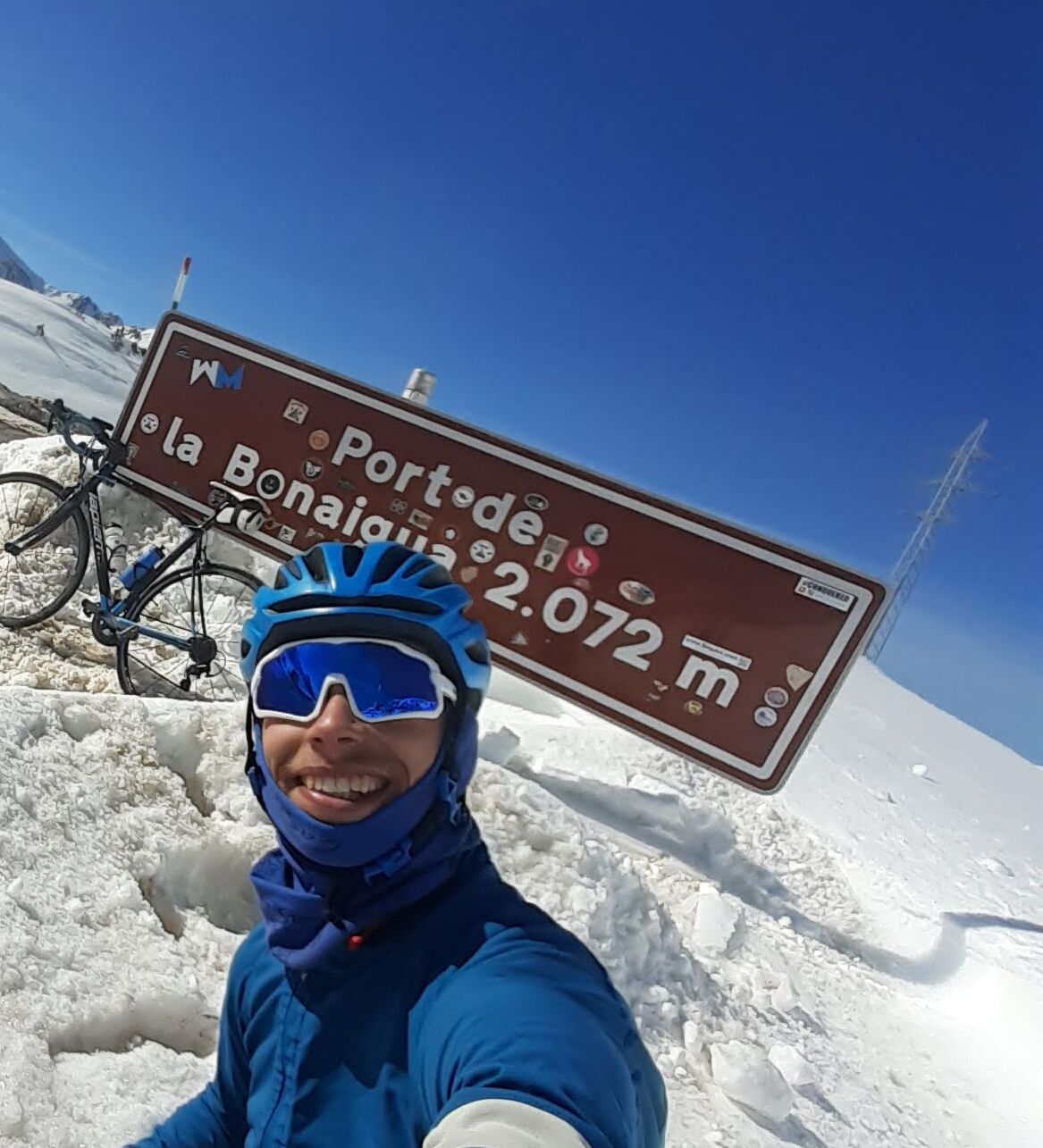'Getting away with it is shockingly easy': Five reasons why motor doping suspicions won't go away
Having spent over a year investigating motor doping, Chris Marshall-Bell examines the rumours and unanswered questions that remain


Motor doping: pro riders enhancing not their own performance but instead adding watts directly to the back wheel – what do you reckon? Are you shrugging your shoulders, or shouting about a hidden conspiracy that cycling continues to wilfully ignore?
One year ago, my response was somewhere in between those two extremes. I’d heard rumours, of course, but I had no firm opinion either way. I’d seen the videos that many keyboard warriors cite as ‘proof’ of motor doping – Fabian Cancellara’s 2010 Tour of Flanders win and Chris Froome’s Mont Ventoux attack at the 2013 Tour de France – but I wasn’t convinced. Then something very strange and unexpected happened.
In 2022, I chanced upon a YouTube video that reminded me of the story of Femke Van den Driessche, a Belgian cyclo-cross rider who was caught with a concealed motor inside her spare bike at the 2016 Cyclocross World Championships U23 race. She was the first – and to date only – rider to be sanctioned for motor doping. Within minutes, I was overwhelmed by curiosity about how and why the sport had been so quick to forget such a shameless scandal. Surely the threat hadn’t simply vanished.
Over the past 12 months my obsession with motor doping has taken me across Europe, beginning with a trip to Belgium to meet Van den Driessche. She was just 19 when the motor was discovered, and I was determined to find out what motivated her to attempt this bizarre form of cheating. This led me to bigger questions: was Van den Driessche really the only one? Can we be confident that motors haven’t infiltrated the pro peloton to a far greater extent? The result of my investigations is a six-part documentary, Ghost in the Machine, a podcast series examining motor doping in greater depth than has ever been attempted before.
In this feature, I want to explain why I’m still preoccupied by the question of whether motor doping is the biggest threat to cycling’s integrity since the darkest days of blood doping, and whether it’s being brushed under the carpet by the sport’s authorities, fearful of the damage another cheating scandal could do. So without further ado, here are the top five reasons why I’ve been completely engrossed in this investigation – and why none of us should dismiss the threat.
>>> Listen now to Ghost in the Machine.

1. Van den Driessche’s story doesn’t add up
For the podcast, I spoke at length with both Femke Van den Driessche and family friend Nico the man who claimed that it was his bike – the one with the motor hidden inside it. No spoiler alert necessary when I tell you that it was clear both Femke and Nico were sticking to the agreed script. But their claim doesn’t really add up.
The UCI told me that not only was the bike Van den Driessche’s size, with her name printed on it, but also that it was painted in blue stars to represent her win at the U23 European Championships three months before she was busted. What’s more, the bike was manufactured by Wilier only a handful of months before it was found to contain a concealed motor – immediately rubbishing Nico's statement that he inherited the bike from Van den Driessche at the end of the 2014/15 cyclocross season. Not that further proof was needed, but the UCI also informed me that it had seen photographic and video evidence that Van den Driessche used that very same bike in other races. The bike was easily identified by the seatpost and – permission to snigger – the button to activate the motor tucked away under the handlebar tape.
The latest race content, interviews, features, reviews and expert buying guides, direct to your inbox!
Both Van den Driessche and Nico were central to cycling’s most-feared crime. Still now, the thought of a rider winning races with a hidden motor is utterly enraging. Without a meaningful explanation in this case – the only motor discovered at a pro race – it is surely impossible to accurately appraise the risk of it happening again.
2. Many within the sport admit their suspicions
What has been most striking and revealing for me is the near-universal acceptance within the sport that other riders aside from Van den Driessche were winning pro races with motors hidden in their bikes. While no one has presented any evidence – and yes, this really matters – the majority of the cycling insiders I have spoken with, from UCI presidents and Tour de France winners to staff members of national governing bodies and mechanics, have indicated to me, either explicitly or implicitly, that they believe hidden motors have been used at the top level of the sport.
And there’s a very clear reason as to why they think this: it was so easy to get away with. Hidden motor technology has existed since the late 1990s, but no tests to detect them were introduced until 2016 – coincidentally or not, the first day of bike-scanning was the very day Van den Driessche was caught.
In episode two of the podcast, two journalists, one Italian and one French, recount separate stories about how they came close to finding proof of motors at the top level. Maybe one day someone will cough up, or maybe they won’t. What I am confident about, though, is that most of those in-the-know inside cycling are convinced Van den Driessche wasn’t the only one.
3. Evading detection is shockingly easy
It should be stressed that the technology exists to easily hide a motor in a bike – modern motors are tiny, subtle, and powerful. How do I know? Because I’ve ridden a bike with a concealed motor inside it – and it blew my mind.
Despite claiming that they test for hidden motors at every men’s and women’s WorldTour race with a trio of detection systems in place, the UCI’s testing is highly inconsistent – something I expose on the podcast. For example, the world governing body didn’t test a single bike in the 2023 Giro d’Italia’s first two time trials, and at the Vuelta España, the x-ray machine – described as their best weapon against mechanical fraud – wasn’t used until the final week.
Moreover, very few people in the sport have faith in the magnetic iPad scanner that accounts for the vast majority of tests. Another problem is that the UCI is doing the testing itself, eerily reminiscent of its failed approach to anti-doping in the 1990s. Why isn’t an independent body in charge of scanning for illicit motors? And why does the UCI not let anyone see images of the x-ray scans?
In a statement, the UCI said: "As for any process under the authority of UCI Commissaires, the verification of equipment is not only carried out confidentially to preserve the integrity of the process but also to prevent any disclosure of private information. In a similar manner to anti-doping tests, all bike checks under the technological fraud testing program are protocoled and relevant information kept on file, including but not limited to x-ray images, for potential use in formal or disciplinary proceedings."
Without transparency, it’s impossible to be convinced that the UCI has a grip on the threat.
4. Governing bodies are terrified of the fallout
Another recurring suspicion during my investigation has been the idea that if a WorldTour rider was caught with a motor, the sport might choose not to confront it, for fear of the potential fallout. When I spoke to Brian Cookson, who was UCI president at the time Van den Driessche was caught, he did not downplay the threat. “This was an existential threat to the sport,” he admitted. And one former pro who rode in the biggest races told me: “If they found a motor in the bike of a big pro, they wouldn’t make it public, as it would bring the sport down.”
I don’t share the conviction that it would be the end of the sport. OK, sponsors of teams implicated would surely withdraw their funding, but people would still watch cycling, and sponsors would return. Oakley was associated with Lance Armstrong, but it is as invested in cycling today as it was 25 years ago. The more likely outcome of a big-name rider being found with a motor would be that the sport is set back financially for several years, at a time when it is desperate for additional investment.
The pessimistic and widely held view that motor doping could kill off cycling as we know it has led many to suspect a cover-up. Indeed, at the 2023 Tour de France several staff members of various teams shared unverified anecdotes with me of teams being caught with motors in previous years, or of suspicious activity. According to them, the truth was never outed. It’s very easy to dismiss the chatter around motors as paranoia. It’s not lost on me that cycling, given its past, attracts a great deal of cynicism and conspiracy-mongering – and Van den Driessche remains the only sanctioned motor doper. But might it be true that the sport just cannot stomach such a big scandal?
5. The code of silence lives on
Immediately after I asked Tadej Pogačar about motor doping, in December, four journalists from four different countries interrogated me: “Why would you ask that question?” They seemed baffled, even affronted. It was yet another indication of the hush-hush nature of the topic – the ‘say nothing’ culture we know only too well. Anything to avoid bringing the sport into further disrepute. But we ought to remember that sportspeople have always found innovative ways to cheat, and, sadly, probably always will. Honestly, I don’t know if motors are being used today, and I accept that the risks for a pro doing so would be very high – but I know it’s possible.
Those who don’t believe that motors are even a threat argue that too many people surrounding the motor-doping rider would need to know about it, thereby making the risk of whistleblowing just too great. They may be right. This remains, for me, the strongest argument for disbelieving the existence of motors in pro cycling. However, hushing up the conversation around the threat of motor doping plays into the hands of the would-be cheats. It’s only by having meaningful debate, being transparent and accepting the ever-present potential for skulduggery, that we can guard the sport against cheating in whatever form it may take.
Co-writer's view: ‘Just another conspiracy? Maybe not…’
CW features editor David Bradford on how his involvement in the Ghost in the Machine podcast altered his view on motor doping
When Chris first asked me to help write the script for Ghost in the Machine, while being flattered I was also slightly bemused. Up until then, I’d regarded motor doping as just another conspiracy theory – motors hidden in pros’ bikes seemed barely more credible than 5G chips hidden in Covid vaccines. There’s always a huddle of paranoid people noisily advancing wildly cynical notions. But then I began to reckon with the evidence, the weird circumstances of Femke Van den Driessche’s case, the countless suspicions about other riders – emanating not just from the usual online trolls but in many cases from people well connected at the highest level of the sport – as well as the sketchy detection protocols and the ever-developing motor tech. I haven’t exactly changed my mind, but I’m now far more open to the possibility that motor doping has played a decisive part in some of cycling’s biggest races. All credit to Chris for having the tenacity to pursue this investigation further and deeper than anyone else has dared. If motor doping really was – or is – the terrible threat that many people suspect, Ghost in the Machine has gone a long way to waking us up to what needs to be done to ensure that the ruleenforcers stay at least one step ahead of the would-be cheats

How to listen
Just search Ghost in the Machine wherever you get your podcasts, or click this link.
The full version of this article was published in the 8th February 2024 print edition of Cycling Weekly magazine. Subscribe online and get the magazine delivered to your door every week.
A freelance sports journalist and podcaster, you'll mostly find Chris's byline attached to news scoops, profile interviews and long reads across a variety of different publications. He has been writing regularly for Cycling Weekly since 2013. In 2024 he released a seven-part podcast documentary, Ghost in the Machine, about motor doping in cycling.
Previously a ski, hiking and cycling guide in the Canadian Rockies and Spanish Pyrenees, he almost certainly holds the record for the most number of interviews conducted from snowy mountains. He lives in Valencia, Spain.
